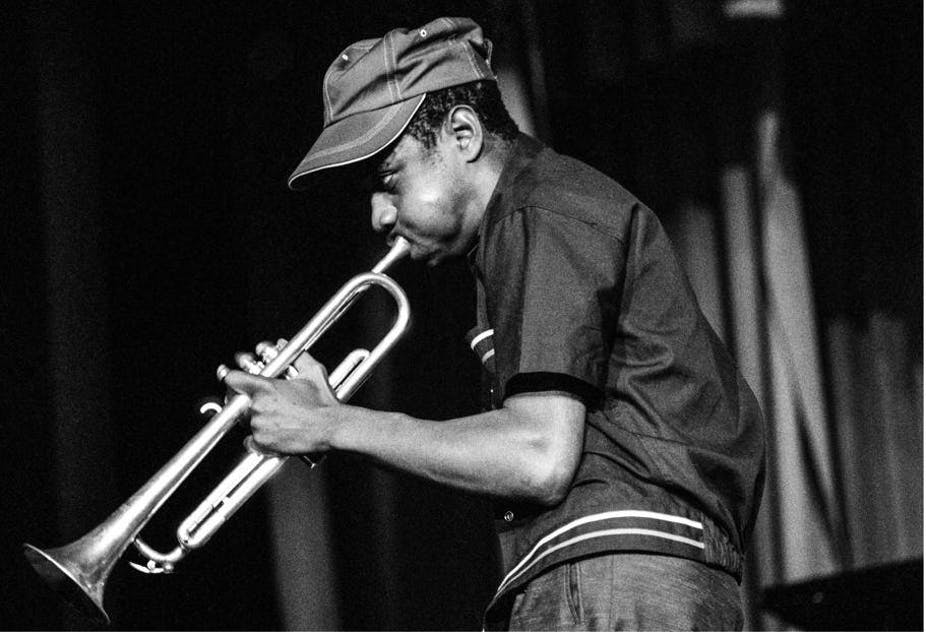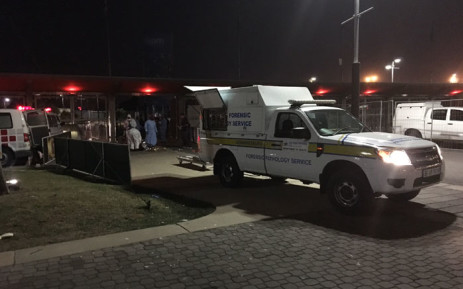Remembering the Blue Notes: South Africa’s first generation of free jazz by Gwen Ansell, 11 September 2017
“We were all kind of rebels,” drummer Louis Tebogo Moholo-Moholo recalls, “so, like birds of a feather, [we] flocked together.”
He’s talking about the Blue Notes, a multiracial modern jazz outfit formed in Cape Town in the early 1960s. White composer and pianist Chris McGregor joined forces with some of the most radical young black players on the city’s scene: alto saxophonist Dudu Pukwana, tenor saxophonist Nikele Moyake, trumpeter Mongezi Feza, bassist Johnny Mbizo Dyani and Moholo-Moholo, the only original Blue Note still alive and working.
What lost photos of Blue Notes say about South Africa’s jazz history by Lindelwa Dalamba , 14 October 2019

In 1964 a young South African student and photography enthusiast, Norman Owen-Smith, took his Leica camera along to a jazz concert at the then University of Natal Pietermaritzburg’s Great Hall and captured a series of black and white images of the band, the Blue Notes.
Through the intervention of jazz scholars, these photos have been printed, restored and exhibited, years after the band became iconic.
Fake tickets lead to stampede in Johannesburg

Oudekraal Beach, Bakoven
A Little Piece of Ocean Paradise. Oudekraal beach offers beautiful sea views and calm waters. Oudekraal Beach, part of the Table Mountain National Park area, is one of Cape Town’s best kept secrets. Not far from the crowd favorites like Camps Bay and Clifton, this little beach is tucked away in a cove and offers a unique kind of experience.
This secluded beach, situated between Llandudno andn Bakove, has both historical and spiritual significance for the Muslim community. At the turn of the 18th Century, it was a refuge for slaves who had escaped from the colonial authorities and their masters. Among them were Muslim spiritual leaders who had been captured and brought to the Cape after leading uprisings against slavery in the Dutch East Indies. The Oudekraal ravines provided seclusion and safety for them and allowed them to teach their disciples and keep Islam going in the Cape. The spiritual, historical and natural importance of this Area has left this piece of paradise relatively untouched. The parking lot sits above the beach with a 'Boma' and braai area for functions. Just above the beach, to the left, is a grassy area with more braai sites for lazy afternoon picnics. Stake out a spot provided with privacy from others by the milkwood trees and build a fire whilst enjoying uninterrupted views. The small sandy cove is sheltered by boulders, creating a tempting swimming area with gentle swells that are easy to swim through. Lie on the beach, play some bat and ball, go for a dip or climb onto one of the boulders and soak up some sun.
This is one of those Cape Town spots that leaves you in awe of the natural beauty that we’re surrounded by. With the turquoise water, white sand and gorgeous granite boulders, you couldn’t ask for a more picturesque setting. Things to do: Take a dip – the water is nice and calm so it’s a great place to take the kids, who can splash around in the shallows if they’re not ready to take to the sea just yet. Although be warned, it’s cold! There is also no lifeguard on duty so you’ll need to keep an eye on your little ones. Bring a picnic or braai with and enjoy the unbeatable view of the ocean (you’ll have to leave that bottle of wine at home, though; there’s a strict no-alcohol policy here. This area is a popular diving spot because of the rich marine life, the colourful Justin’s Cave and the oldest wreck in the country - 'Het Huis te Kraaiestein', which sunk in 1670. Take a diving course – there are many beginners’ courses that are held in the area. Bring your goggles and have a snorkel, there’s plenty to see in the cove near the shore. Get snap happy – the stunning landscape and views means this is a gorgeous location for occasion photoshoots and your Instagram page, as well as a treat for landscape and nature photographers. Gather under the stars - Oudekraal is an awesome venue to have an event; from a party to a wedding or corporate function this stunning outdoor space will make it unforgettable. The Gazebo can accommodate 60-70 people and contains several braai areas, power points and lights for night time events. Prices vary depending on the nature of the event. (Call the events & film department on +27 (0)21 712 0527 to make a booking for a functional event) Opening times: Weekends and public holidays: 8am – 6pm | Weekdays: Closed except to function bookings Conservation fee: R30 per person, R15 per child and free entrance for Wild Card and Table Mountain National Park (TMNP) My Green Card holders. Beautiful corals and spectacular display of marine life is what now envelopes her. Excellent bottom topography and great site for photography. There’s even a seal colony called Strawberry Rocks nearby. Snorkeling and freediving are freely permitted, but you’ll require a permit for scuba diving! Oudekraal is a significant Historical and Spiritual Site for the Muslim Community. At the turn of the 18th Century, it was a refuge for slaves who had escaped from the Colonial authorities and their masters. Among them were Muslim spiritual leaders who had been captured and brought to the Cape after leading uprisings against slavery in the Dutch East Indies.
The Oudekraal Ravines provided seclusion and safety for them and allowed them to teach their disciples and keep Islam going in the Cape. Make sure you bring everything you need with you because there are no shops! There’s a strict no-alcohol policy here with the exception of the gazebo, which is available for hire for private events. (Read about the My Green Card: it entitles you to discounted entries to all Table Mountain National Park pay points. On the other hand, For one year of unlimited entry to various National Parks, Reserves and Resorts, you could look into getting yourself a Wild Card. Check out the Facebook album of this idyllic spot. For more information, call SANParks on +27 (0)21 712 0527 between Monday to Friday.)